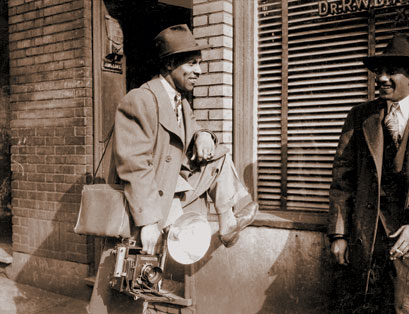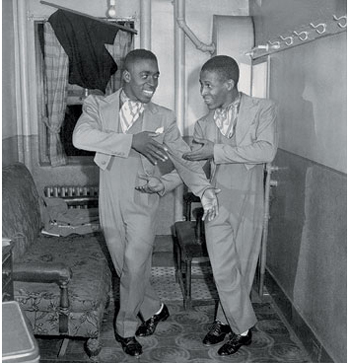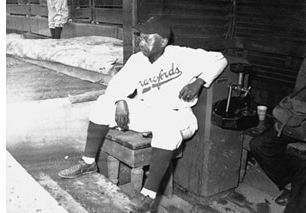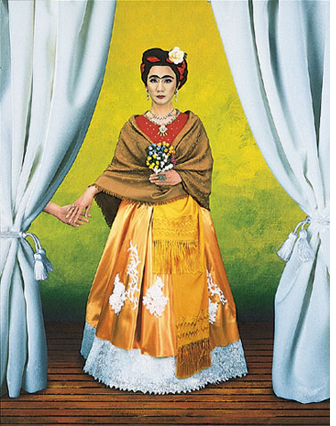Documenting
Our Past:
The Teenie Harris Archive Project
By Ellen S. Wilson

Charles "Teenie" Harris
The public will have
an opportunity to see the photographs—and
make a contribution to the historical record they represent—when
part one of the Teenie Harris Archive Project opens. “Our
goal is to show as many unpublished photographs as
we can, and invite the public in to tell us what they
are about, to help identify the people, places, and
events they represent, and to tell us what memories
the photographs trigger,” explains Louise Lippincott,
the museum’s curator of fine arts. In 2001, Carnegie
Museum of Art acquired the Harris archive after the
Harris family’s successful
suit against a private dealer to gain control of
the photographic negatives. The museum had acquired
4,500 prints in
1997, but Harris, who never threw a negative away,
took approximately 100,000 photographs during his
career. The recent acquisition contains more than
80,000 of
those negatives, many of which are set in Pittsburgh’s
Hill District. “The community has the information
we need to catalogue the photographs,” says
Lippincott. “The
best way for us to get the information is to make
the photographs available, and to listen to what
people
have to tell us.”
 The
Performers The
Performers
The museum is working with a Teenie Harris
Advisory Committee
on the enormous
task of identifying the
photographs. To that end, work prints (prints
not made by Harris)
and hundreds of photocopies of photographs in
binders will be on view so visitors can see what the
pictures
are and share that information with the museum.
This is a pilot project, Lippincott explains, with
different
strategies in place to capture the information. “We
want to see what works, and how much information
we can get. It will have a huge influence on
how we manage
the collection.” “
I think we’ll learn a lot,” says
Glasco, who is a member of the advisory committee.
Glasco recounts
a recent talk he gave in Baldwin on the Harris
archive, “and
it was surprising how many people, white as well
as black, lived on the Hill and had known Harris
or their
family had known him. It was clear that the photos
do evoke memories and people do have stories
to tell.”
Glasco says the information will
not only provide a major contribution to scholarship,
but it will
also
help bring the community together. “People
have forgotten the glory days of the Hill,” he
says. “The Hill was a highly integrated
neighborhood. Until 1930, it was mostly White,
with many Italians
and Jews, but also Chinese, Syrians, Lebanese,
Greeks, Irish, Poles, Germans. There were all
sorts of ethnic
groups there.
“If it is made clear to
them, these people will come and help contribute
to the fuller history of the Hill, which we’ve
forgotten. These pictures will
provide a renewed sense of place.” Harris,
with no formal training, began his career as
a freelance photographer, and then
worked
as principal photographer for the Pittsburgh
Courier from 1936
through
the mid-1970s. At that time, the Courier was
one of the country’s most influential
black newspapers with four national editions,
as well as editions for
Africa, the West Indies, and the Philippines.
 Crawfords' Crawfords'
Baseball Player
It was Mayor David L. Lawrence who first gave
Harris the nickname “One Shot” for
his tendency to snap only one shot of a scene
and then move on.
A true photojournalist, more interested in
the stories the pictures told than technical
prowess, he nevertheless
had an instinctive eye for a picture and an
innate ability to take it at just the right
time. As his son Charles A. Harris, wrote, “Dad
believed in brevity. He felt that more people
should concentrate on giving shorter answers
and writing shorter speeches. When Dad answered a question
he was succinct. You knew exactly where he stood; there
would be no sugar coating in his answers. This trait
carried over into his work.”
“He was a wonderful photographer,” says Lippincott. “Putting
aside
subject matter, the way he composed a scene,
the way he represented people, make these images
wonderful in their own right.”
Subject
matter, however, is part of what makes these
pictures so valuable. “The more famous
black photographers were mainly studio photographers,” explains
Glasco. “They didn’t take that
many photographs out on the street, and they
had a more middle class
audience. Harris took photographs of the middle
class and blue collar—not just famous
people, but ordinary subjects. For example,
he would shoot the baseball
players, but also the fans in the stadium.
. . . He was interested in capturing just people.”
Back to Contents
Recent Acquisition:
An Inner Dialog with Frida Kahlo
By Ellen S. Wilson
 An
Inner Dialogue with Frida Kahlo (Gift 2), 2001, by
Yasumasu Morimura, c-print; ed. 6/10. Gift of Pamela
Z. Bryan. An
Inner Dialogue with Frida Kahlo (Gift 2), 2001, by
Yasumasu Morimura, c-print; ed. 6/10. Gift of Pamela
Z. Bryan.
With the purchase of An Inner Dialog with Frida
Kahlo,
the Museum of Art gains a work by one of the
most important voices of the 1980s in photography
in Japan,
says curator
of contemporary art Laura Hoptman. Yasumasu Morimura,
born in 1951, uses digital techniques to interpose
himself into famous works of art or famous figures
in cinema. Liza Minelli, Marilyn Monroe, even
the Mona Lisa herself, are all transformed by Morimura
into
new images that can be both disturbing and amusing.
Inspired by high art as well as the commercial,
Morimura piles artifice onto artifice, drawing
on the work of Cindy Sherman and Mariko
Mori, among others. In the series “An Inner
Dialogue with Frida Kahlo,” Morimura
assumes the persona of the artist Frida Kahlo
(1907-1954), a Mexican painter well known for
striking self-portraits that portrayed the love,
pain, sickness,
and joy of
her tumultuous life. This practice of replacing
the subject’s face with his own is conceptually
rooted in both the Japanese Kabuki theater tradition,
where
male actors play female parts, and in postmodern
appropriation, where artists borrow imagery from
diverse sources to
comment
upon the power of images themselves. Morimura’s
near-perfect photographic copy of Kahlo’s
painting extends the transformation further swapping
elements from her original composition
for those of Japanese origin, such as the hana
kanzashi, Japanese flowered hairpins that he
has substituted
for the flowers in Kahlo’s hair. The resulting
photographic work allows Morimura to pay subversive
homage to Kahlo, whose own life and art parallel
the “beautiful
commotion” that Morimura seeks in his own
work.
Back to Contents |